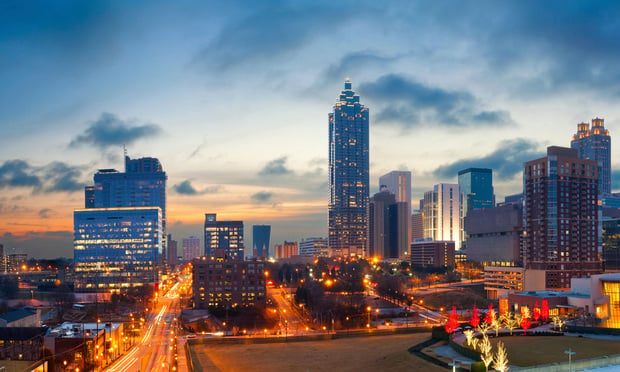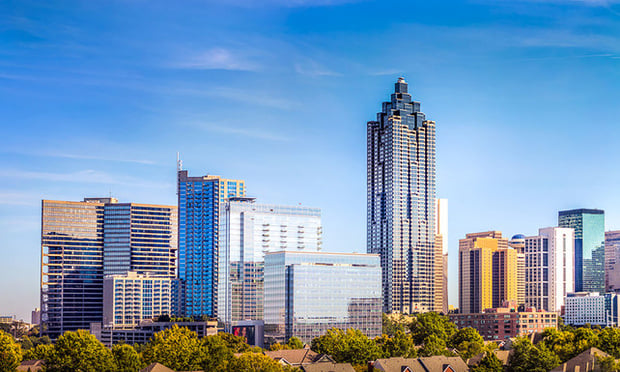ATLANTA—The hotel sector is still growing, but many travelers are giving preference to hotels with a restaurant and bar. With this demand, the industry may see new hotel developments getting more creative with this component.
GlobeSt.com caught up with Manny Dominguez, principal of Cooper Carry's Hospitality Studio and Bill Johnson, principal of The Johnson Studio at Cooper Carry, to get their insights the evolution of food and beverage (F&B) offerings in the hotel sector. You can still read part one of this article: Will This Hotel Line Continue to Blur?
GlobeSt.com: Why and how are F&B offerings driving the bottom line for hoteliers?
Dominguez: Today's hotel guests are seeking more authentic experiences, especially when it comes to dining out. Attractive bars and local chef-curated menus are creating popular social places in the city.
F&B also creates an energy curve that activates the hotel throughout the day and into the evening. The mood of the guests is influenced by the F&B concepts, whether it's an active breakfast place, a lively bar or a romantic dinner spot. These moods or “vibes” carry throughout the hotel, creating a synergy with the other guest areas that makes everything more attractive.
GlobeSt.com: How do you think F&B in hotels will continue to evolve over the next decade?
Dominguez: The F&B component will increasingly become an essential part of hotel development, not only as a significant source of revenue but also as a way to bring individual, local character to each property. With every restaurant, a hotel has the chance to develop a unique identity that is crafted specifically for that market.
From local cuisines and markets to homegrown chefs and servers, restaurants can be rooted in a community in real, meaningful ways. As guests will only become more sophisticated shoppers and diners, the resulting competition in the industry will likely lead to more investment in all aspects of F&B—quality of food, experienced staff, and restaurant and bar design.
GlobeSt.com: Why did Cooper Carry and The Johnson Studio join forces?
Johnson: Cooper Carry and The Johnson Studio were collaborating on a boutique hotel in North Carolina. The design energy was visible from the start and we were able to create spaces that would not have been possible without each other's early input.
A few other pursuits took place and it occurred to us that we were only two blocks from each other in downtown Atlanta. It's been a great, collaborative relationship and a game changer for our firm and our clients.
Our union provides comprehensive solutions that look at all aspects of design, from inside to out, start to finish. We are uniquely able to identify creative opportunities early on in the design process, and integrate our ideas continuously, working side by side.
When building a new hotel, the traditional way of development has called for a master tenant mix and spaces spec'd for restaurants that consist of a minimum square footage and often don't get past the “white box” mentality. Traditionally, it's been a linear process, one where the architect may be at the table but the restaurant designer/architect doesn't come into the process until much later and typically via the chef/restaurant owner tenant.
Our process at Cooper Carry and The Johnson Studio at Cooper Carry is much more collaborative, more like design-build and the restaurant designer comes to the table early. Getting in at the foundational building design stage allows for a better layout for developing the concept, a more solid approach to maximizing revenue/seating and the ROI/restaurant winning formula.
Knowing this in advance helps with the initial floor plans so that it is not being address at T/I build-out. It also saves money for both owners and tenants at build-out when MEP doesn't have to be moved after the fact.
The “white box” is well-conceived and informed by best practices in restaurant design and a clear understanding of the overall development and its owners' vision. Also, if a hotel plan includes a restaurant, an early conversation with our team can connect the restaurant to the overall development on a much more profound level. It can complement and even extend the architectural significance of a property if the restaurant designer, who brings another perspective to the creative team, is on board at the conceptual stage of building design. Ultimately, our approach leads to better design and money saved.
Want to continue reading?
Become a Free ALM Digital Reader.
Once you are an ALM Digital Member, you’ll receive:
- Breaking commercial real estate news and analysis, on-site and via our newsletters and custom alerts
- Educational webcasts, white papers, and ebooks from industry thought leaders
- Critical coverage of the property casualty insurance and financial advisory markets on our other ALM sites, PropertyCasualty360 and ThinkAdvisor
Already have an account? Sign In Now
*May exclude premium content© 2024 ALM Global, LLC, All Rights Reserved. Request academic re-use from www.copyright.com. All other uses, submit a request to [email protected]. For more information visit Asset & Logo Licensing.









